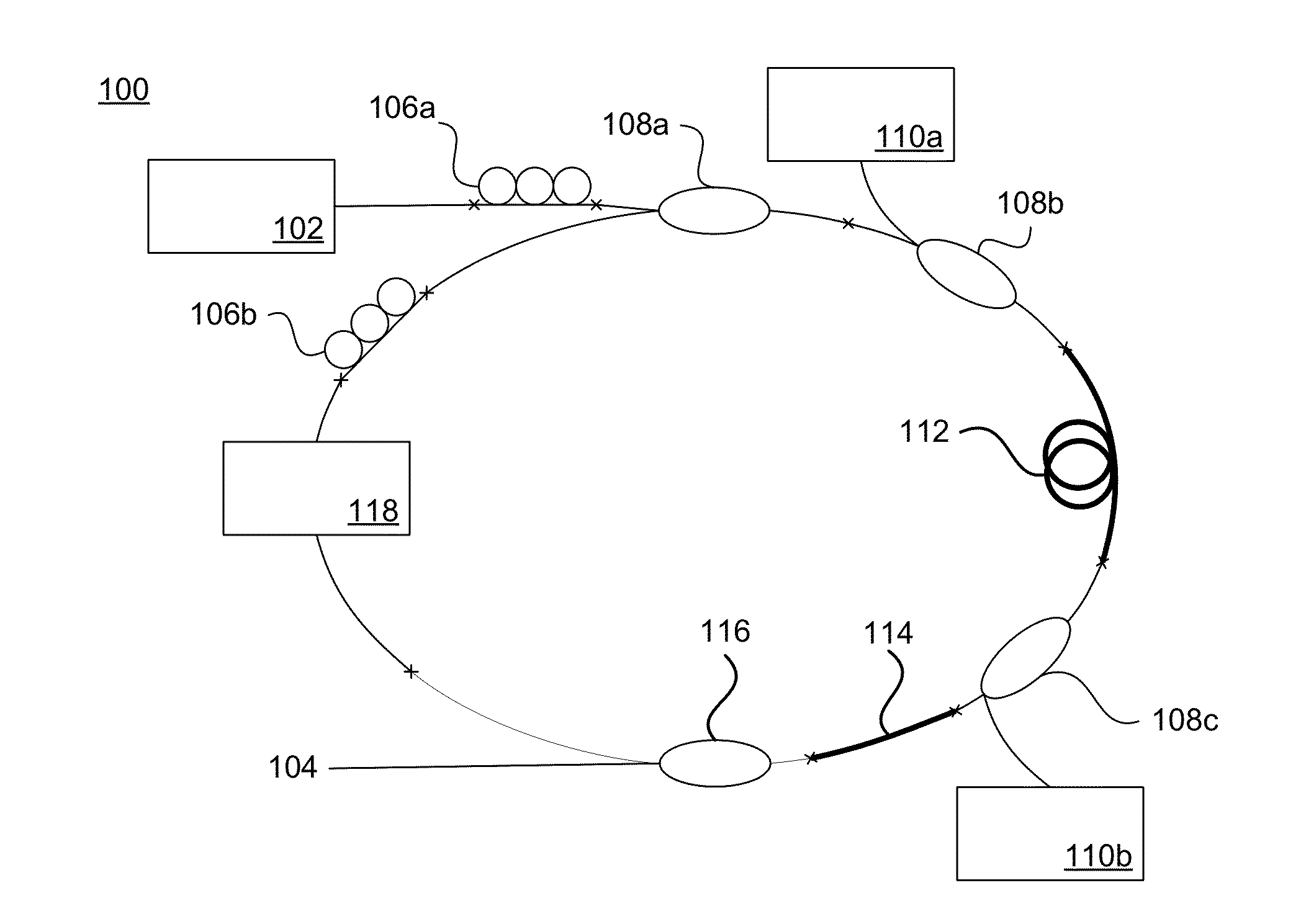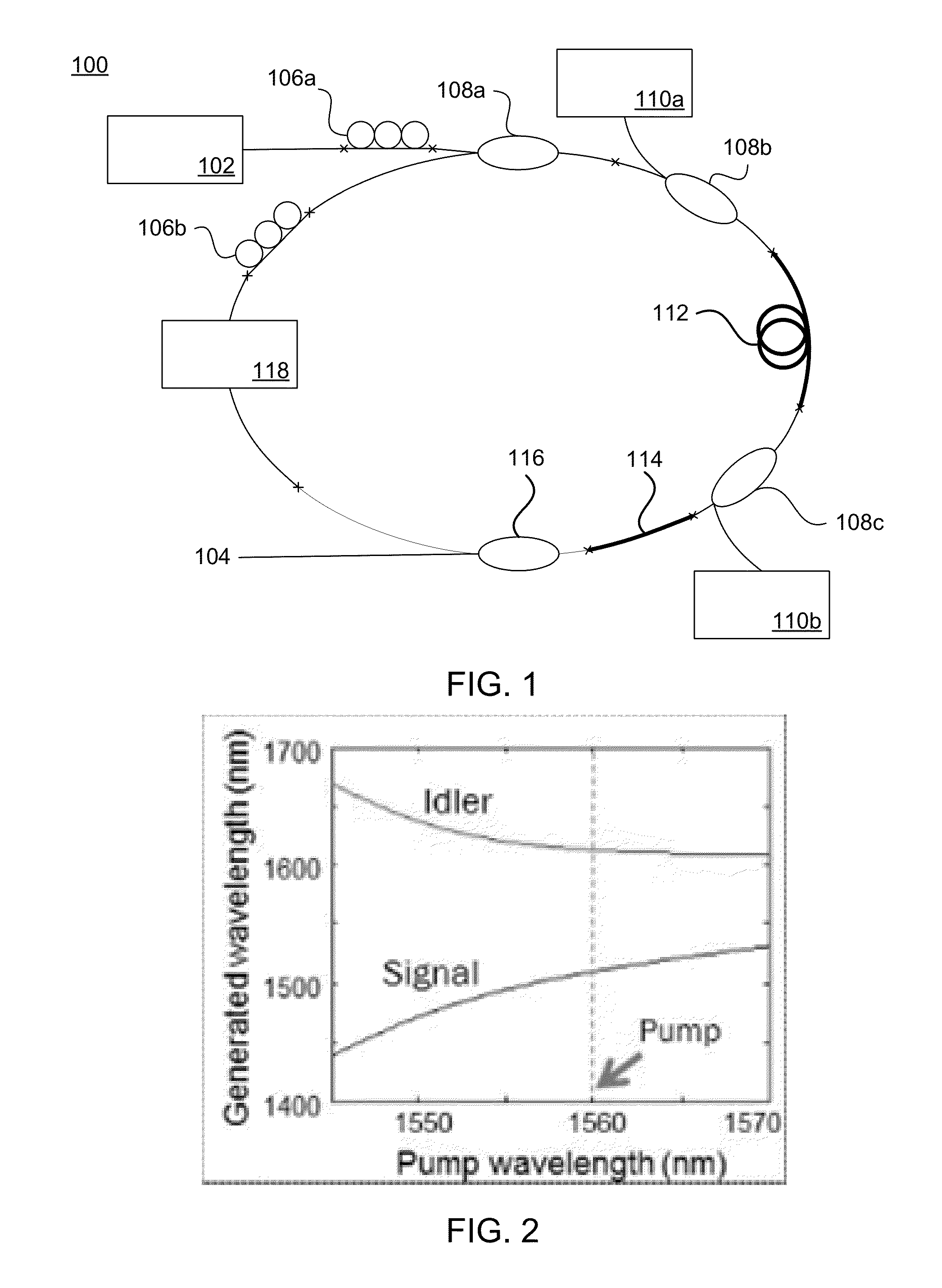Dissipative Soliton Mode Fiber Based Optical Parametric Oscillator
- Summary
- Abstract
- Description
- Claims
- Application Information
AI Technical Summary
Benefits of technology
Problems solved by technology
Method used
Image
Examples
sixth exemplary embodiment
[0112]A sixth exemplary embodiment 1000 is described with reference to FIG. 10. Configurations common to those of previous embodiments will be denoted by the same reference numerals the descriptions thereof will be omitted. Compared to previous embodiments the signal and idler pulses are divided by a fourth WDM coupler 1024a and recombined later with a fifth WDM coupler 1024b. The signal light is coupled into the SMF 1020 fiber described in the fourth embodiment and the idler light is coupled into NDF 1022 used in fifth embodiment. The fiber lengths for the SMF 1020 is 13.52 m and the NDF 1022 are 13.8 m.
seventh exemplary embodiment
[0113]The seventh exemplary embodiment is another specific example of second embodiment 700 described above and is similar to the fourth exemplary embodiment except for the differences described below. The pump laser 102 is a tunable laser whose wavelength can be tuned from 1040 nm to 1060 nm. The length of the HNLF 114 is 1 m. Thus, the center wavelength is tuned from 778 nm to 835 nm, and the spectral width of the signal is changed from 3.5 nm to 5 nm. In the FOPO, the fiber 720 is SMF and the length is 12.7 m. The length of the ODL 118 is tuned from 4 cm to 6 cm.
eighth exemplary embodiment
[0114]The eighth exemplary embodiment is a specific example of the second embodiment 700 described above and is similar to fifth exemplary embodiment except for the differences described below. Like the seventh exemplary embodiment, the pump laser 102 is a tunable laser whose wavelength can be tuned from 1040 nm to 1060 nm. The center wavelength of the FOPO is tuned from 1451 nm to 1568 nm, and the spectral width is changed from 14.8 nm to 13.6 nm. In the FOPO, the fiber 720 is a NDF and the length is 12.9 m. The length of the ODL is tuned from 11 cm to 14 cm.
PUM
 Login to View More
Login to View More Abstract
Description
Claims
Application Information
 Login to View More
Login to View More - R&D
- Intellectual Property
- Life Sciences
- Materials
- Tech Scout
- Unparalleled Data Quality
- Higher Quality Content
- 60% Fewer Hallucinations
Browse by: Latest US Patents, China's latest patents, Technical Efficacy Thesaurus, Application Domain, Technology Topic, Popular Technical Reports.
© 2025 PatSnap. All rights reserved.Legal|Privacy policy|Modern Slavery Act Transparency Statement|Sitemap|About US| Contact US: help@patsnap.com



